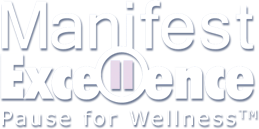It’s no secret. An extreme amount of information about food inundates us daily. It’s easy to feel overwhelmed and unsure about how to make the best choices for your particular needs. In some cases making healthy choices can become challenging. For example, if you have special dietary needs because of conditions like diabetes, celiac disease or lactose intolerance you can develop significant health problems by making unwise choices. Other times financial constraints makes food shopping challenging. You want to get the most for your dollar and you want to enjoy it.
For most people, however, healthy eating confusion comes from information overload about “good” and “bad” food and unrelenting information about the best diet for losing weight. If you find yourself in that category it’s time to get back to basics about what healthy eating means. First step: stop thinking about food in terms of good and bad.
Instead, start thinking about which choices support your health and well-being. This seemingly simple shift in thinking can move you out of guilt or fear about what the “wrong” choice will do and into a more empowered mind set of choosing what’s going to help improve your personal wellness and your family’s wellness.
Each person has their own nutritional needs. It’s import not to oversimplify your healthy eating plan. Speaking with your primary care doctor or a dietician can help you best understand how to make food choices the will serve you and your household well based on medical history, health risks, schedules, and other lifestyle factors. In general, however, most people can start making healthy meal choices by remembering these three basic steps:
1) Choose a variety of food sources: Whether you grew up on the old food pyramid that taught you to think in terms of nutrient building blocks-protein, carbohydrates and fats-or you’re using the new My Plate model, healthy eating includes daily representatives from all food groups. For the standard American diet a nice variety includes protein, grains, fruits, vegetables, and dairy. Protein can come from animal, fish, plant, or dairy sources. Choose your source based on preference and personal health needs. Whole grain foods tend to have more nutrients than their processed alternatives which lose some of their wellness boosting components during processing. When possible choose whole grains.
2) Choose healthy preparation techniques: Even healthy food choices like fruits, vegetables, and grains can lose their wellness benefits if consistently prepared in a way that destroys nutrients or adds excess things you don’t need like salt, fat or calories. Baking, broiling, steaming, or eating some foods raw (fruits and veggies) tend to be the healthiest techniques.
3) Choose appropriate quantities: This doesn’t mean fixate on every calorie. It means pay attention to how much you eat. Simply enjoying your food and paying attention to what you’re eating rather than multitasking and mindlessly eating too fast can decrease the amount you eat in one sitting. It’s also important to choose portion sizes that meet your dietary needs. Monitoring the frequency you’re eating can further help curb mindless eating from stress or boredom. Even if you’re making healthy food choices too much of it is still too much.
We all need to eat to survive. Most of us already have more than enough stress in our lives. Making food choices that improve our personal wellness doesn’t have to add feelings of frustration and overwhelm. Remembering these three steps can help meal time become more joyful.
Be well.
Holistic Wellness Speaker and Wellness Luminary Donna Hamilton, MD has a mission to help everyone live the healthy, satisfying lives they’re meant to lead. She passionately teaches what being healthy really means and how to do it in a way that fits your unique needs. Her comprehensive approach to health and wellness addresses mental, emotional, social, spiritual and physical well-being. Dr. Hamilton-a former board certified pediatrician-now specializes in health optimization. She retired her white coat and stethoscope and now speaks nationally about holistically improving health and well-being. To book Dr. Hamilton for speaking engagements visit www.ManifestExcellence.com
© 2013 Donna L. Hamilton, MD
- 10 Quick, Easy Holiday Self-Care Tips - December 15, 2017
- Health Benefits of Kindness and Compassion - June 3, 2017
- Why Self-Care is Good for Your Health - May 10, 2017






